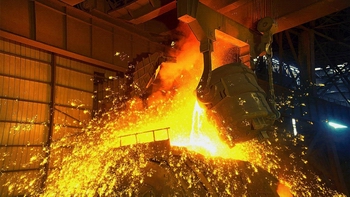 Home > News
Home > News



One of the prime reasons while explaining the slow growth of global steel industry in the reommoent period relates to surplus capacity in steel compared to demand, existing and emerging. Lots of uncertainties plague the fresh capacity additions efforts by steel mills around the globe. These concern the domestic trend of end-user demand, export difficulties accentuated by a spate of protective measures adopted by major steel producing countries, fiscal and monetary policies of the government making investment costlier than warranted by the market dynamics and various environment regulations that have made new steel-making operations conscious of the perils of carbon emission and taking preventive steps as a necessary component in the planning stage itself. It may be noted that World Steel Association that compiles all relevant data on global steel industry and publishes regular reports on production, consumption, technology, sustainability, exports, imports, raw materials, regional developments, demand outlook etc., does not cover steel capacity related and pricing issues. These may be dictated by anti-trust legislative stipulations for the association.
This job, therefore, is being done by OECD steel committee who has been monitoring country-wise capacity additions for the last decade, a short term forecast of steel capacity additions up to 2020, underway and planned as well as the investment planned for the purpose. This is a commendable effort by OECD which is dominated by EU and USA and the data compiled may be deemed essential to enable them to draw up the survival and growth strategies for their steel industry in the coming years. The global crude steel capacity is shown as 2,381 MT in 2016 comprising Chinese capacity at 1,165MT and rest of the world capacity at 1,216 MT. Being the single-largest component (49% share in global steel capacity) the Chinese capacity as reported can be compared against 1,144 MT reported by the IMF in its latest report on Article IV Consultation on China (staff estimates) and therefore varies by a small margin.
However, it is interesting to observe that WSD has made a distinction between gross crude steel capacity at 1,008 MT and eco capacity at 880 MT for China. It has been acknowledged by the IMF that the overcapacity in steel, coal, cement, aluminium, chemicals, ship building and solar power in China has highlighted the downward pressure on global prices, rising market share for Chinese firms, tensions with key trading partners, environment and financial stability. Similar feedbacks are also made by other agencies while analysing surplus capacity in China. In 2016, China had a capacity utilisation rate in steel at 69%. As per OECD estimates, some investments earmarked for capacity augmentation in China would be offset by permanent closures.
Out of 100-150MT closure targets set by China during 2016-20, a capacity of 45MT of IF capacity has been eliminated in 2016. China is planning only 5MT capacity augmentation for 2017-19 periods with a plan of reducing capacity by more than 55-105 MT of the residual target. Assuming a minimum of 105MT of capacity elimination achievement, if not more, in the next 3 years by China, the envisaged steel capacity in China by 2020 is likely to be 1,020MT. Surplus capacity is defined by excess of supply over current demand. The global finished steel consumption has been estimated to be 1,515 MT in 2016. Theoretically assuming 90% yield from crude steel to finished steel and around 85% capacity utilisation of finished steel production, the supply comes to 1,821MT of finished steel, thereby throwing a surplus of 306 MT. In reality, the capacity utilisation at global level was at a much lower level of 68.5% in anticipation of a slower demand growth. Actual production was 1,630MT of crude steel and the yield from crude to finished was higher than 90% to meet the global demand of 1,515 MT.
Thus, it was a fact that, globally, subdued demand growth contributed to lower capacity utilisation, magnifying the excess supply scenario. In China, applying the same formula, the crude steel availability was 1,050 MT. Actual production of 808 MT yielded 77% capacity utilisation. Finished steel availability on standard norm of yield rate gives 727 MT and against actual finished steel consumption of 681 MT in 2016, this produces an excess supply of around 46MT of finished steel in China. For India, the report has put 10.5MT capacity underway during 2017-19 period and another 42 MT capacity under planned category to be added on the current capacity of 126 MT. Out of the planned category, a few of them shown under Essar Steel, Uttam Steel and Power continue to be uncertain. While those capacities under brown field expansion are sure to come, those under green field and the fresh ones depend on the emerging market expansion in the country.
XINSTEEL NEWS